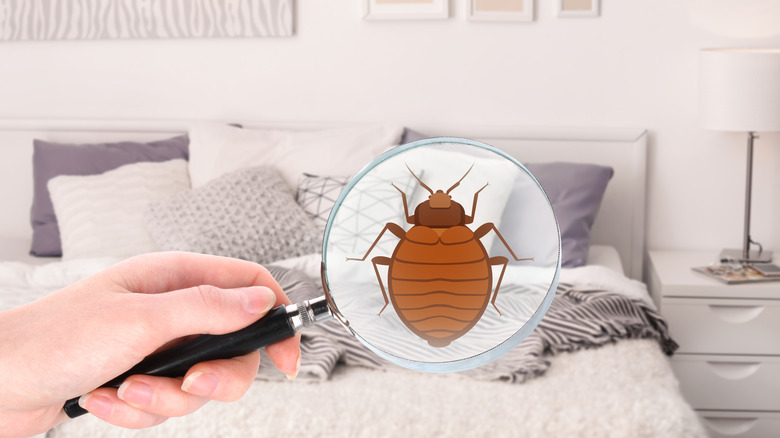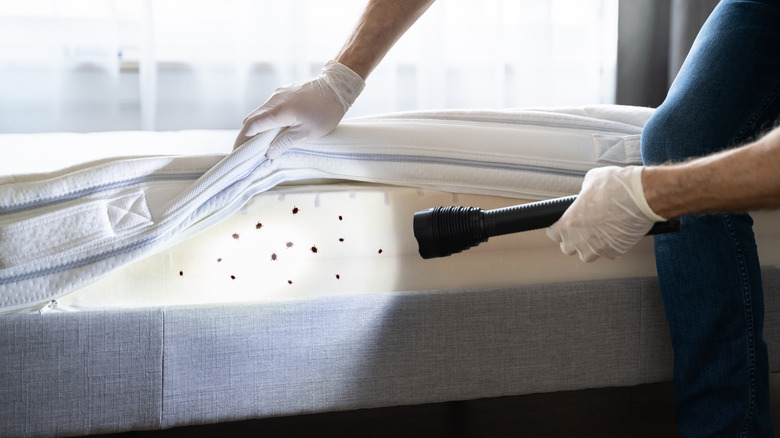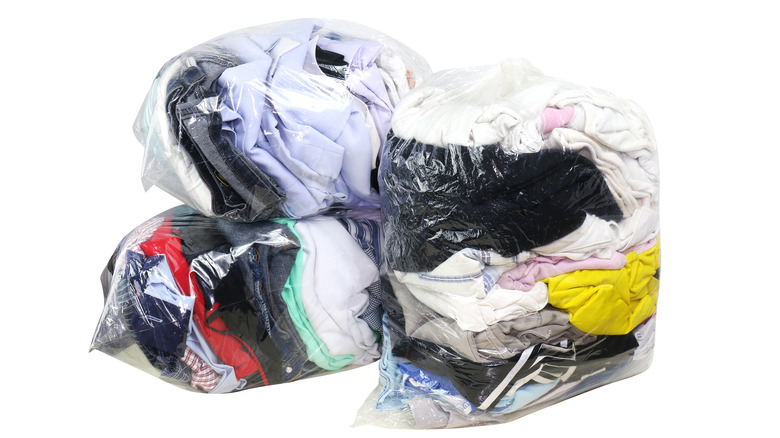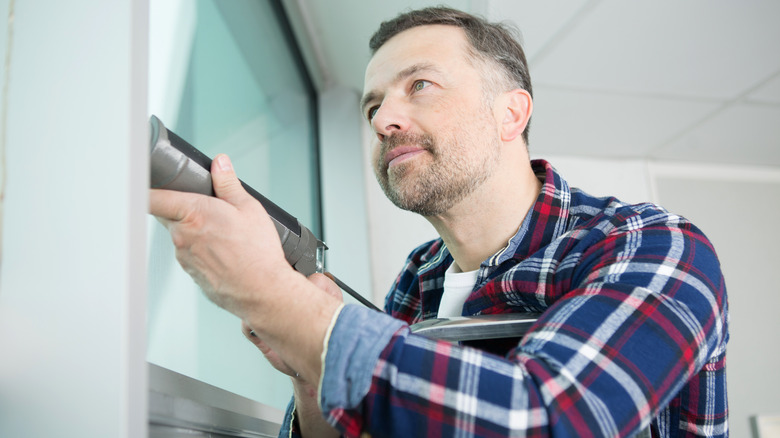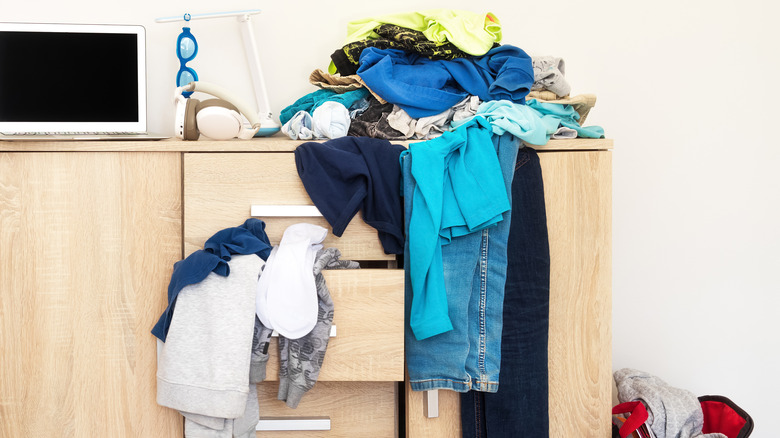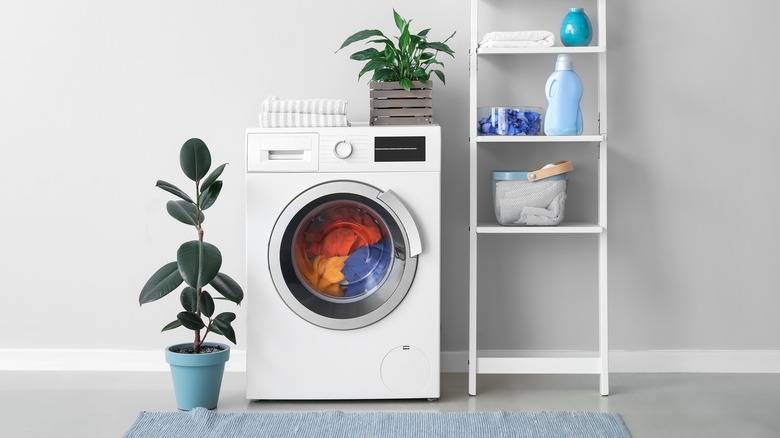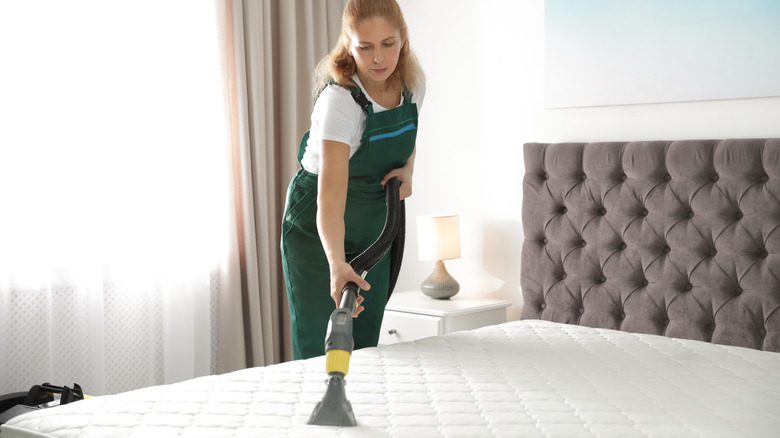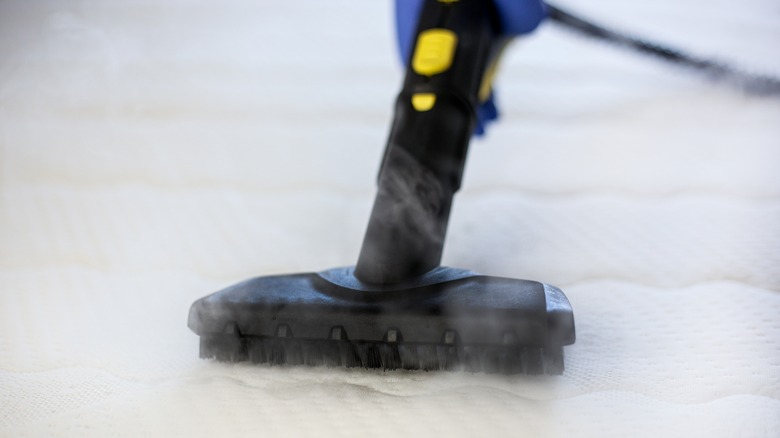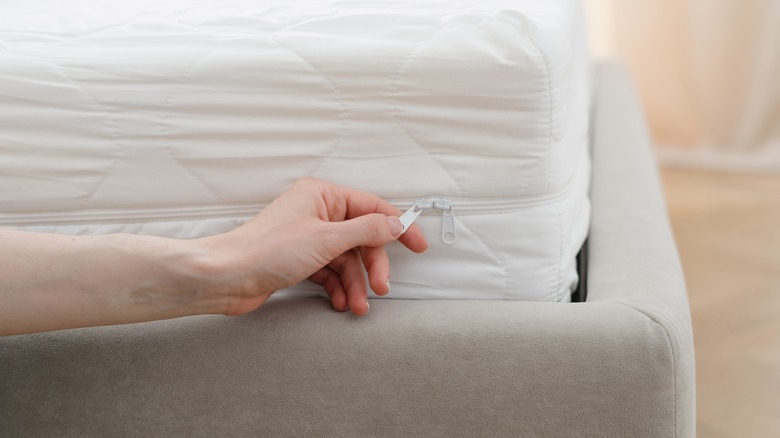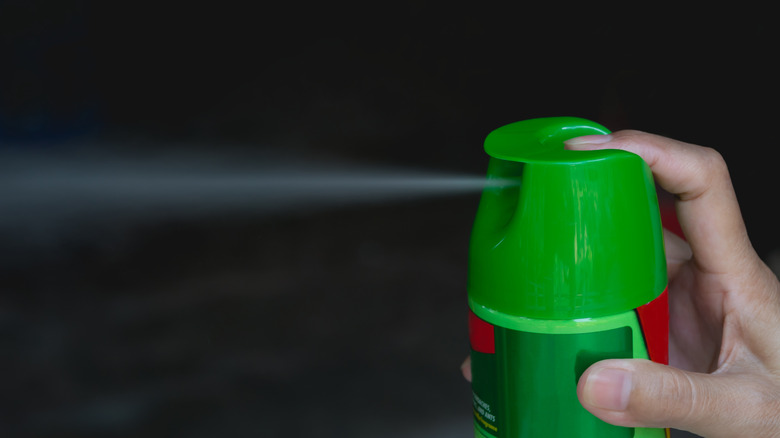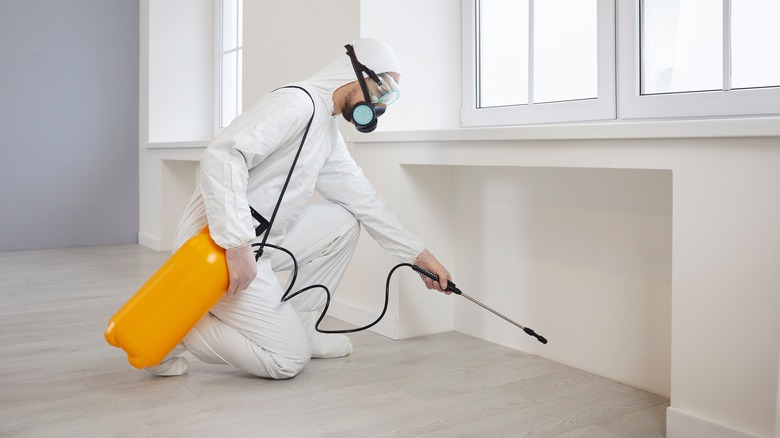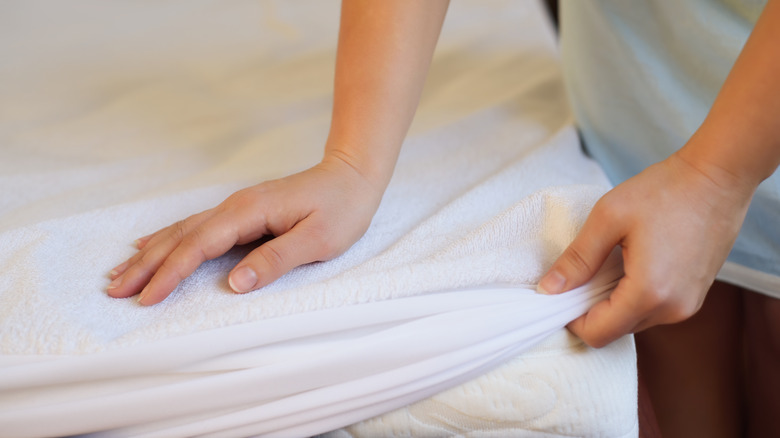The Ultimate Checklist For DIY Bed Bug Treatment
Bed bugs can be a real annoyance. They are tiny in size and can be very difficult to completely remove from your home. And, if your remediation efforts don't get them all, you're likely to be facing another major infestation in no time. Beyond being annoying, bed bugs are also a public health issue, according to the United States Environmental Protection Agency. Unlike some other pests, they (fortunately) do not spread diseases, but they can cause a wide range of other negative effects in the individuals whose homes they infest.
For some, bed bug bites will simply be itchy or maybe a bit painful. However, for others, their bites can pose a serious threat. People can develop an allergic reaction to bed bug bites; these reactions have the potential to be life-threatening. Another potential negative health effect of these pests is that their bites can cause lymphangitis, impetigo, and other skin infections. Moreover, dealing with a bed bug infestation can wreak havoc on an individual's mental health and lead to insomnia, anxiety, and other problems.
If you're dealing with a bed bug problem, act quickly to get rid of them before the infestation grows and spreads to more areas of your home. Don't know where to start? Use the checklist below to help you make sure you thoroughly address the issue and limit the chances of the bed bugs coming back again.
Check for signs of a bed bug infestation
Before you begin treating for bed bugs, it is important to confirm that you are indeed dealing with a bed bug infestation and not a different pest. If you can see any of the bugs themselves, take a close look at them to confirm that they are really bed bugs. Fully mature bed bugs are very small, only about 4 to 7 millimeters long. Before eating, they will look relatively flat and brownish in color. If they have already eaten blood, they will be more red in color. If the bugs you see are flying or jumping, then you're not dealing with a bed bug infestation, as they cannot do either of these things. They can, however, move very quickly. If you cannot see the bed bugs themselves, you may be able to find their eggs, which are laid in groups, typically in well-hidden areas. The eggs are minuscule; each being only about the size of a pinhead. They are white, which can make them difficult to spot.
Beyond searching for the bugs or their eggs, there are several other signs of a bed bug infestation. These can include finding blood stains on your bedding, musty odors, rust-colored stains left behind from the excrement, and bites on your skin. A bed bug bite might look similar to those caused by mosquitoes; however, they are more likely to be clustered over different sections of your body.
If you suspect that you are dealing with a bed bug infestation, do a thorough search of the area, paying special attention to the places where bed bugs are most likely to hide. Their hiding places may include along the seams or base of a mattress, inside the bed springs, along or under headboards, footboards, and other bedroom furniture. They may also be found in clothing, bags, curtains, the carpet, along the window and door frames, or inside any other tight crevices in the room.
Place any infested items in sealed plastic bags and remove them from the room
If you do identify a bed bug infestation, the time to act is right away. Delaying remediation will allow them to spread and make it all the more difficult to get rid of the pests. The first thing you should do is to gather any items in the room which are likely to be infested. Place all of these items in plastic bags before removing them from the room. Tightly seal each bag and set the bags aside for further treatment.
Consider placing the items that are machine washable in dissolvable laundry bags. These special bags are designed specifically for bed bugs. They allow you to place the entire bag in your washing machine, minimizing the chances of the infestation spreading when you open the bag to launder your items. During the wash cycle, the bag will dissolve and will not leave a residue behind on your clothing or linens. Just be sure to check the instructions and description for the dissolvable bags you use, because some may only work with certain types of washing machines.
Use caulk to seal off any cracks or hiding spaces
As mentioned earlier, bed bugs can hide in the tiniest cracks in the walls, floors, and window and door frames. Before treating any surfaces in the room, the thing you'll want to do is to seal off these spaces. This will force the bugs out, and will also prevent any from retreating to "safety" once you begin treatment. Because bed bugs can find even the smallest of cracks, you'll need to search carefully to make sure you don't miss sealing a potential hiding space.
To seal these cracks, you'll need caulk and a caulk gun. Follow the manufacturer's instructions to open the caulk and break its seal, then load it into the caulk gun. Apply the caulk to any cracks you find. If you want to be able to paint over the caulk in the future, choose a latex-based formula. Silicon caulk can be applied to walls or baseboards that are already painted, but you will need to remove it from surfaces before you'll be able to paint them in the future. If you are renting, be sure to inform your landlord or property management about the bed bugs immediately, so that they can take the necessary actions to remedy it.
Clear out clutter
Despite what some individuals may believe, cluttered and messy homes do not necessarily cause bed bugs. However, these characteristics can make it much easier for bed bugs to hide and remain undetected, limiting the effectiveness of extermination attempts. If you have any clutter in your room or the infested area, it is best to remove it from the space and take away any other potential hiding spots for the bed bugs.
Remember, though, you don't want to simply carry any items — even trash — out of the room without first bagging them. Sort any clutter into categories of items you want to keep, and those that can be thrown out. Place each group of items into a bags and take them out of the room. Any trash should be disposed of immediately into an outside trash can. Basically, you want your room to be as empty as possible — try to leave nothing but the furniture — to help you most effectively get rid of the infestation.
Clean and store any items from the room
All of the items that were removed from the bedroom or living area in plastic bags will need to be thoroughly cleaned. If this step is skipped, it is likely that you will reintroduce bed bugs into the bedroom, creating a whole new infestation to deal with. The ideal cleaning method will vary based on the item. Machine washable clothing, bedding, pillows, and toys should be cleaned in the washing machine (don't forget the dissolvable washing bags!). Use a high-heat wash setting to make sure all of the bed bugs are killed.
Hard items that are not machine washable, but can be submerged in water, should be hand washed with hot water or cleaned in the dishwasher, when possible. When washing in the dishwasher, be sure to turn on the heated dry setting. After cleaning clothing, linens, and any other washable items, place them in a clean plastic bag or storage tote. Keep them away from the infested room until you are confident that the pests have all been remediated. Any books, electronics, or other items that are not washable will need to remain sealed in the plastic bags. Later, you can give these items a detailed inspection to identify and remove any bed bugs. Unfortunately, sometimes if an item is infested and you're not able to wash it, it may just be best to throw it away.
Clean the mattress, floors, furniture, and any other surfaces in the room
Now that you've sealed cracks and emptied your room out of everything other than the bed, you're ready to give the floor, furniture, and all other surfaces in the room a thorough vacuuming. Any household vacuum is suitable for this job, but one with a HEPA filter is preferred if you're looking to minimize allergens that are released back into the air. Additionally, vacuums with bag containers are preferred because you can throw away the entire bag after vacuuming. If you have a bagless vacuum, be sure to completely empty the contents of the container and then clean it.
Start by pulling the bed away from the wall. Take care to vacuum every inch of the mattress, floors, walls, baseboards, as well as under and along the side of furniture. Use vacuum attachments, such as the crevice tool, to reach into any areas where the vacuum head will not fit. The brush attachment is also useful because it can help scrape up bugs and eggs. Removing the faceplates and cleaning around the electrical outlets and light switches is also a good idea, as bed bugs could hide in these small spaces.
After you've finished vacuuming, take the vacuum outside to empty it. Put the contents in a trash bag — whether it's the entire bag or just what was in the container — and then place it in an outside trash can away from your home. If you do not have a bag vacuum, be sure to check the manufacturer's instructions for how to clean the canister.
Apply a steam cleaning treatment
While it isn't required to use steam when treating for bed bugs, doing so can increase the chances of permanently removing the infestation. Always apply the steam before using any insecticides. If you do the treatments in the opposite order, the hot steam could end up canceling out the insecticide. If you want to use steam, the right piece of equipment is essential. Clothing steamers and many products designed for household work will often not work. Rather, rent a commercial steamer that will heat up to a high enough temperature to effectively remove the pests. A dry-steam model is preferred because it won't leave your mattress and other linens damp. The surface temperature needs to reach a minimum of 160 degrees Fahrenheit in order for the bed bugs to be killed. Try to avoid heating them over 180 degrees Fahrenheit to protect your items. An infrared thermometer can help you monitor the temperatures as you work.
When using the steam, you want to slowly move the nozzle across the mattress. If you go too quickly, the steam will not have the chance to reach all of the bed bugs, leaving several of them still alive. Aim to move the nozzle approximately a foot across the mattress over 30 seconds or so. After you finish steaming, be sure to clean the steamer before you store it or return it to where you rented it from.
Trap bed bugs on the bed or mattress
Once you've finished vacuuming and steam cleaning the mattress and box spring, the next step is to use a mattress liner or encasement to cover them. These covers are designed to trap any remaining bed bugs and prevent them from escaping. Without being able to get out and access any food sources, the bugs will die of starvation. As stated by the University of Minnesota, you'll want to leave the encasement over your mattress for at least a year until you're confident that your bed bug problem has been remediated.
The other thing you can do to prevent any remaining or future bed bugs from accessing your mattress is to use interceptor devices. You can place these devices under each of the bed's four legs. Around the inner section holding the bed leg is a deep moat designed to trap bed bugs. The side walls of the moat are very straight and slippery, which can stop the bugs from being able to climb up onto the bed.
Use insecticides to kill any remaining bed bugs
In many cases, it will also be necessary to apply insecticides. If you are going to attempt to apply the chemicals yourself instead of hiring a professional, always do so with care. The first step is to choose the right insecticide. Opt for EPA-registered products to avoid using anything that isn't approved. Moreover, ensure that the insecticide's label lists bed bugs as one of the pests it kills.
If not used correctly, insecticides can be very dangerous. For this reason, you'll want to take extra precautions when working with them. Before starting application, check the manufacturer's instructions to determine how and where to apply the chemicals. Also, make sure that the product you clean is designed for indoor use. Keep children and pets away when you are treating the areas and after the insecticides have been applied. You should also wear personal protective gear, such as goggles, masks, and gloves when working. Insecticides should never be applied directly to the mattress or bedding, unless they are specifically described as being safe to use in such a manner.
Hire a professional pest management company if needed
As noted above, using insecticides can be hazardous. Moreover, if you don't properly apply the insecticides, they may not be able to complete their job of killing all the bed bugs. For this reason, many individuals choose to hire a professional pest management company. Another reason to hire an exterminator is that they will have more experience dealing with pests, and therefore will know exactly where to look for them and where to apply the treatments. Working with a professional company is also more likely to result in a positive outcome and full remediation of the bugs. This can help you sleep more soundly (literally), knowing that it is less likely for the pests to return. When you factor in the costs of multiple treatments, knowing that an exterminator is more likely to have success on the first time can also help you save money in the long run.
When choosing an exterminator, the EPA recommends hiring a company that uses IPM, or Integrated Pest Management. These companies will look for the best approach to eliminate the pests through the use of chemical insecticides and other treatment options that keep environmental and health risk factors to a minimum. It is also important to do some research and make sure that the company you choose is both experienced and recommended by past clients.
Regularly monitor for any signs of bed bugs
Because it can be so difficult to get rid of every single bed bug, some may still be present after you've finished treating for them. Regularly monitoring your mattress, bedding, and other areas of the bedroom can help you catch signs of a budding infestation early. In addition to keeping an eye out for the pests, maintaining a clean room can help prevent further issues from occurring.
Vacuum the floors and all surfaces every day for a few weeks. Discard the bag after each of these cleanings to prevent any captured bed bugs from escaping. You should also keep your home clutter-free. Remember, where there are fewer places to hide, it will be easier to spot the bed bugs. Avoid bringing all of the items you washed back into your room until you are confident that the bed bugs are really gone. You don't want to go through the process of rewashing everything if it isn't necessary.
Minimize the chances of future bed bug infestations
Once you've cleared out a bed bug infestation, you're not going to want to ever deal with one in the future. One of the most common causes of a bed bug infestation is traveling. If a past guest in a hotel room had bed bugs in their home, they likely hitchhiked in the person's suitcase. This means that they may be in the bedding at the hotel and that they could find their way back to your home through your suitcase and clothing.
Using hard-shell suitcase is one way to minimize the chances of bed bugs getting back into your luggage. Similarly, packing clothing items in vacuum-sealed bags, rather than loose in your luggage, can also make it less likely for you to bring bed bugs home with you. Instead of opening your suitcase on the bed to unpack it, try putting it on a luggage rack in the bathroom, where there will be fewer places for the bed bugs to hide. You should also check the bedding and mattress at the hotel for any signs of bed bugs. If you spot any signs of an infestation, contact the hotel management and request a new room — preferably far away from the current one.
Once you return home from your trip, leave your suitcase in the garage or outside where you can inspect it. Wash everything and dry it on a medium- or high-heat setting to kill bugs. Use a steam cleaner to steam the suitcase before storing it.
